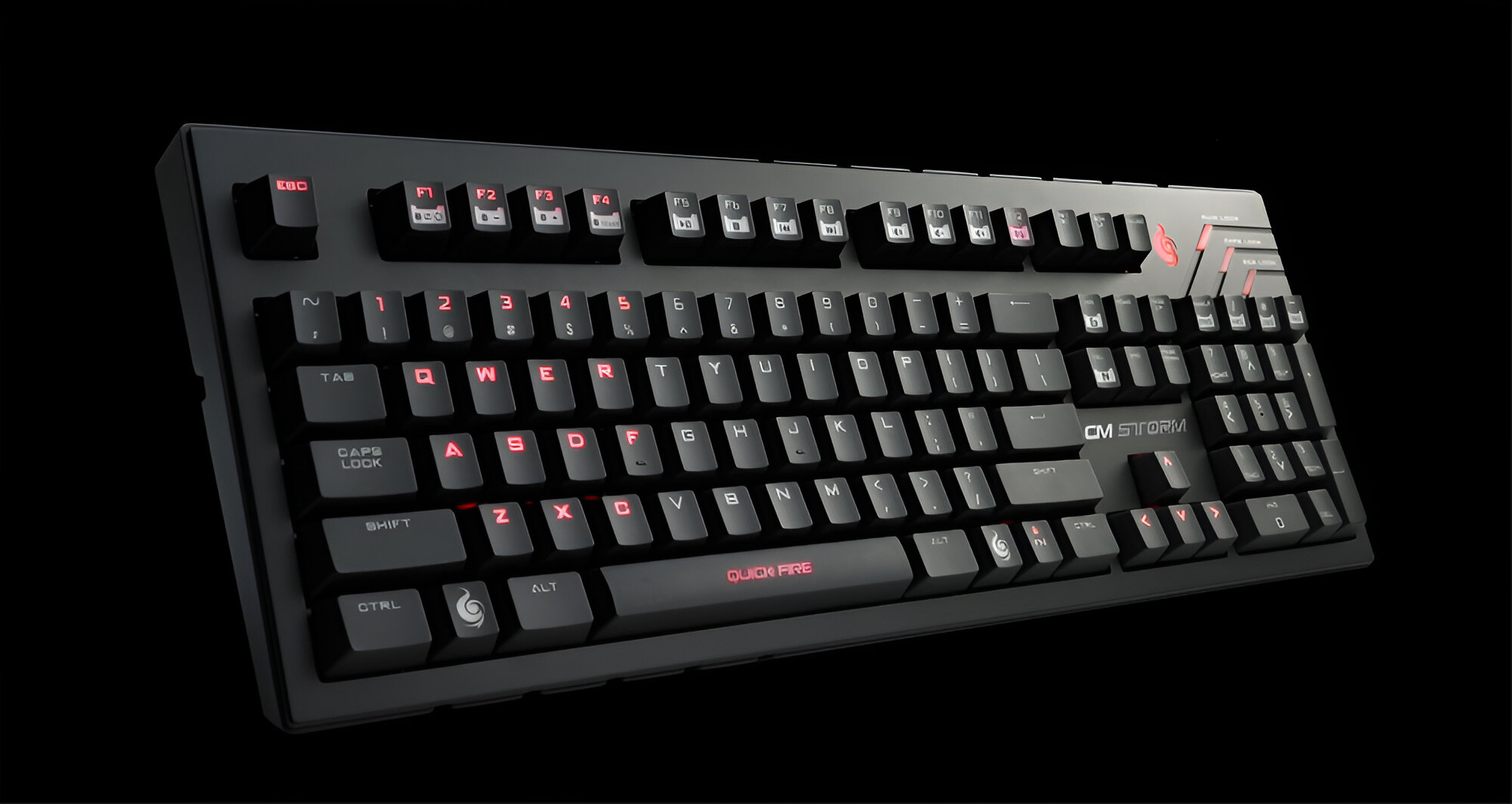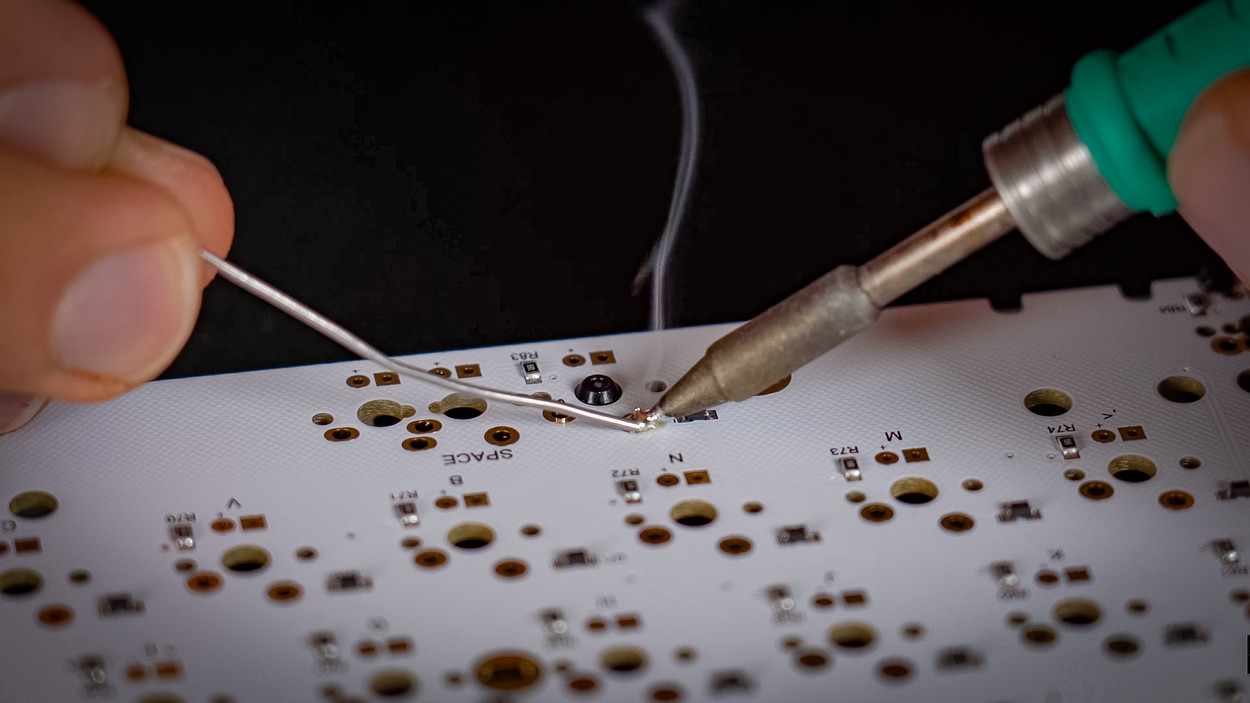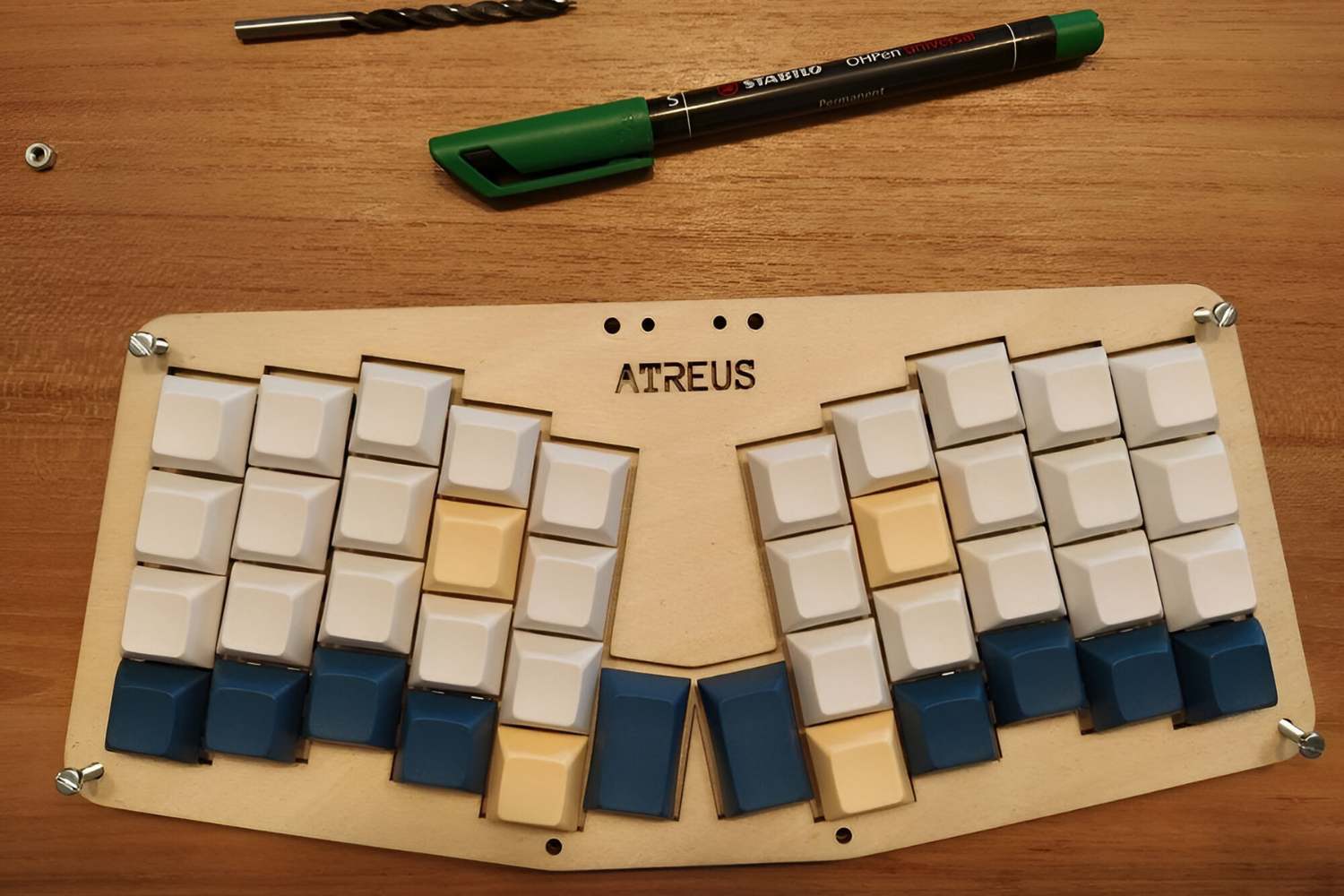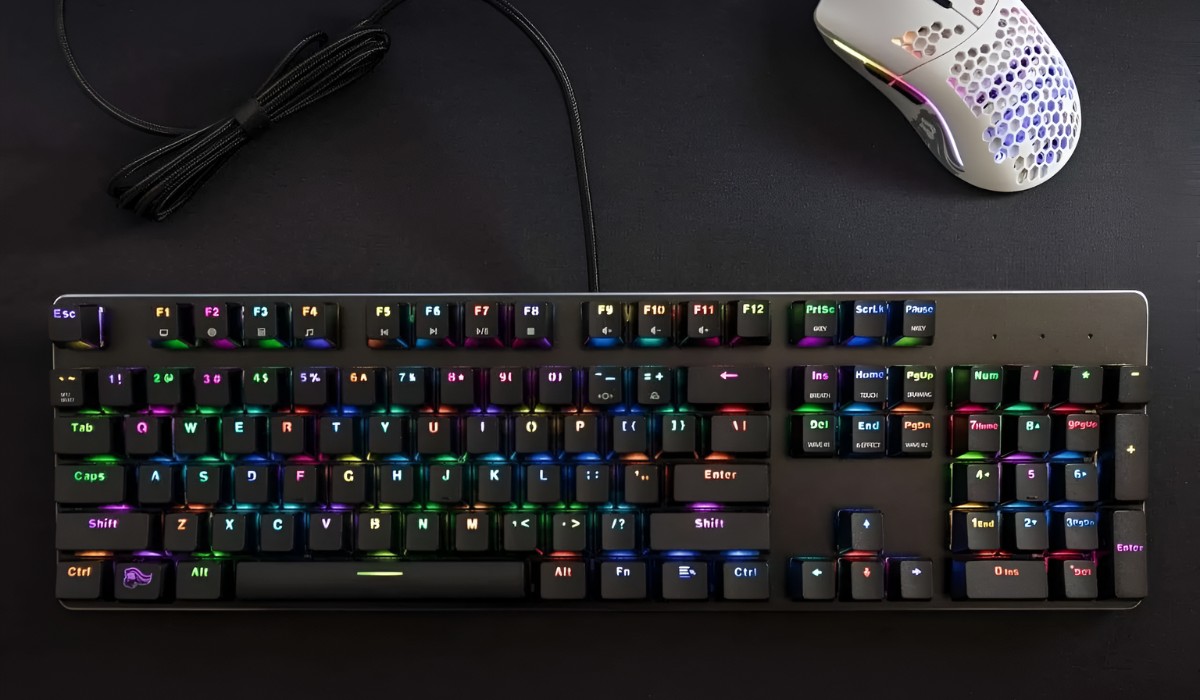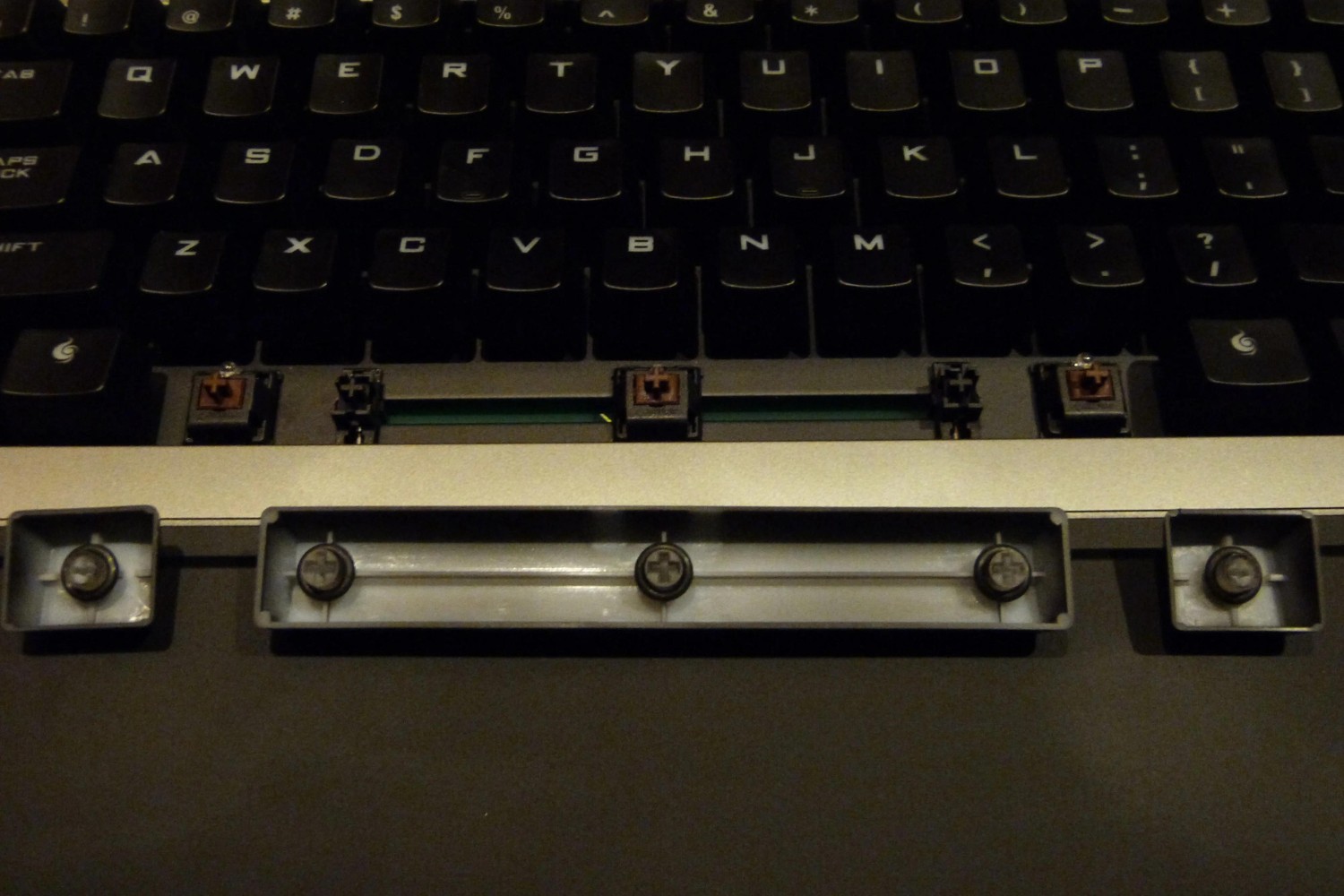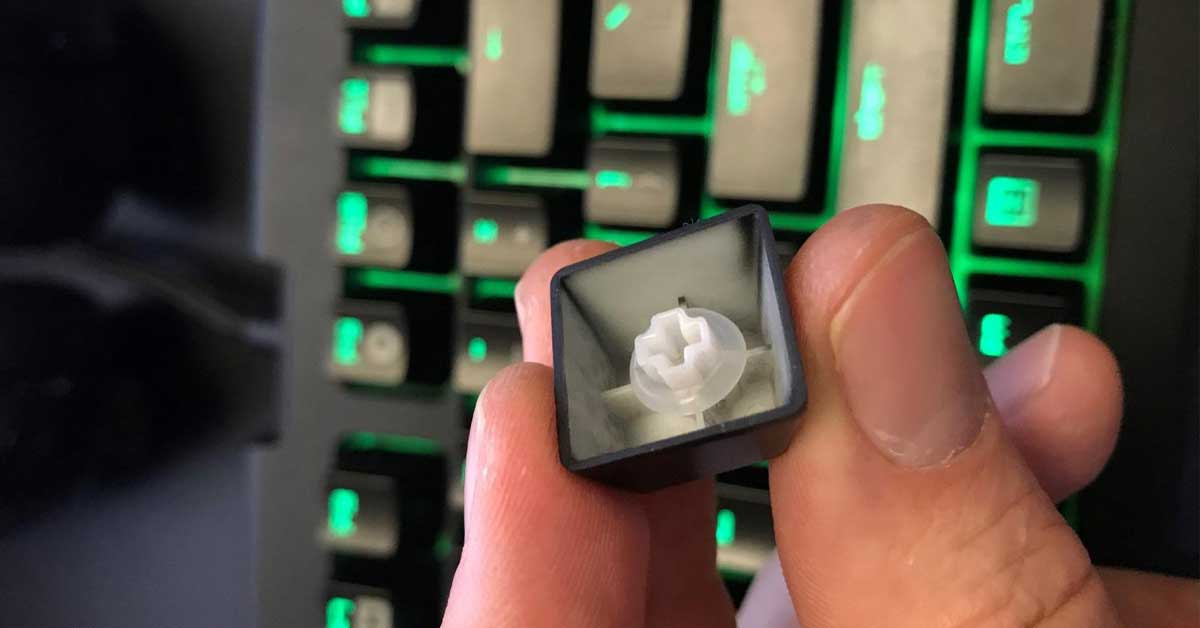Introduction
Are you a proud owner of a mechanical keyboard, but suspect that some of the keys may not be functioning as they should? Whether you're a seasoned typist, a passionate gamer, or a professional who relies on a keyboard for work, ensuring that every key on your mechanical keyboard is in optimal working condition is crucial. However, testing each key individually, especially on a full-sized keyboard, can be a daunting task without the right approach. In this comprehensive guide, we will explore various methods to effectively test the keys on your mechanical keyboard, ensuring that every keystroke is as responsive and reliable as the day you unboxed it.
A mechanical keyboard is a marvel of engineering, with each key featuring its own mechanical switch. These switches come in various types, each offering unique tactile feedback and actuation force. Understanding the different types of key switches is essential to accurately test the functionality of each key. We will delve into the intricacies of these switches and how they impact the testing process.
From utilizing specialized key tester tools to manually testing each key, we will cover a range of approaches to suit your preferences and requirements. Additionally, we'll explore the significance of key rollover and ghosting, two phenomena that can affect the keyboard's performance during rapid or simultaneous keystrokes. Furthermore, we will discuss the role of software in testing the functionality of a mechanical keyboard, providing a comprehensive overview of the available options for assessing and ensuring the proper operation of every key.
Join us as we embark on this journey to demystify the process of testing the keys on a mechanical keyboard. By the end of this guide, you'll be equipped with the knowledge and tools to confidently assess and validate the functionality of each key, empowering you to make the most of your mechanical keyboard experience. Let's dive into the fascinating realm of mechanical keyboards and unravel the secrets behind their impeccable performance.
Understanding the Different Types of Key Switches
Key switches are the heart and soul of a mechanical keyboard, dictating the tactile feel, actuation force, and sound of each keystroke. Before delving into the testing methods, it’s essential to grasp the distinct characteristics of key switches to effectively evaluate their functionality. Here are the primary types of key switches:
- Clicky Switches: These switches emit an audible click sound upon actuation, providing tactile and auditory feedback. They are favored by typists who enjoy the audible confirmation of key presses.
- Tactile Switches: Tactile switches offer a noticeable bump or resistance when a key is pressed, indicating actuation. They are preferred by touch typists and individuals who desire a tactile response without audible click sounds.
- Linear Switches: Linear switches feature a smooth and consistent keystroke without tactile feedback or audible clicks. They are popular among gamers and fast typists due to their seamless and uninterrupted actuation.
Each type of switch has its own unique feel and performance attributes, influencing the overall typing or gaming experience. When testing the keys on a mechanical keyboard, understanding the type of switches installed is crucial, as it enables you to discern any deviations from the expected behavior of each switch.
Furthermore, key switches are manufactured by various companies, each with its own proprietary designs and specifications. Brands such as Cherry, Razer, and Gateron offer a diverse array of switches, with distinct actuation points, operating forces, and durability ratings. Familiarizing yourself with the specific switches present in your mechanical keyboard will facilitate a more accurate and insightful testing process.
By comprehending the nuances of key switches, you’ll be better equipped to recognize irregularities in their performance during the testing phase. Whether you prefer the audible click of a clicky switch, the tactile feedback of a tactile switch, or the smooth keystrokes of a linear switch, understanding the characteristics of each switch type is fundamental to ensuring the optimal functionality of your mechanical keyboard.
Using a Key Tester Tool
When faced with the task of testing the keys on a mechanical keyboard, employing a key tester tool can streamline the process and provide valuable insights into the functionality of each key switch. A key tester, also known as a switch tester, is a compact device equipped with various mechanical key switches, allowing users to compare and assess the characteristics of different switch types.
Key tester tools come in a variety of configurations, typically featuring a selection of key switches mounted on a solid base. Some key testers are designed to simulate the layout of a standard keyboard, enabling users to test specific keys corresponding to their mechanical keyboard’s layout. Additionally, there are comprehensive key testers that showcase a wide range of switches from different manufacturers, offering a comprehensive hands-on experience to evaluate and compare multiple switch types in one convenient device.
Utilizing a key tester tool involves pressing each switch to assess its tactile feedback, actuation force, and overall feel. This process allows users to identify any inconsistencies or abnormalities in the behavior of individual switches, providing valuable insights into the condition of the mechanical keyboard’s keys.
Furthermore, key testers serve as a valuable resource for individuals considering the customization or modification of their mechanical keyboard. By experimenting with different switch types on a key tester, users can determine their preferred switch characteristics before investing in a complete keyboard or switch replacement. This hands-on approach empowers enthusiasts to make informed decisions based on their personal typing or gaming preferences.
Whether you’re a newcomer to the world of mechanical keyboards or a seasoned enthusiast seeking to fine-tune your typing experience, a key tester tool offers a practical and informative way to evaluate the performance of key switches. By leveraging the insights gained from using a key tester, you can gain a deeper understanding of the nuances of various switch types and make informed decisions when assessing and optimizing the functionality of your mechanical keyboard.
Manually Testing Each Key
While key tester tools provide a convenient method for evaluating the characteristics of key switches, manually testing each key on a mechanical keyboard is essential to ensure comprehensive functionality. This hands-on approach allows users to directly assess the responsiveness and consistency of every key, identifying any potential issues that may not be apparent through other testing methods.
To manually test each key, begin by systematically pressing and releasing every key on the keyboard, paying close attention to the tactile feedback, actuation force, and overall responsiveness of the switches. As you progress through each key, take note of any keys that exhibit inconsistent behavior, such as unresponsive or excessively noisy keystrokes. This meticulous evaluation enables you to pinpoint specific keys that may require further attention or troubleshooting.
Additionally, manually testing each key provides an opportunity to identify any physical obstructions or debris that may impede the proper functioning of the switches. Dust, dirt, or foreign particles can accumulate over time and affect the performance of individual keys. By manually actuating each key, users can detect and address any such impediments, ensuring that the keys operate smoothly and reliably.
Furthermore, manual testing allows users to assess the uniformity of key actuation across the keyboard. Consistent actuation force and tactile feedback are essential for a satisfying typing or gaming experience. By evaluating each key individually, users can detect any deviations in the feel or behavior of specific keys, enabling them to address potential issues and maintain the overall performance of the mechanical keyboard.
When manually testing each key, it’s beneficial to document any irregularities or observations for future reference. This record can aid in troubleshooting and addressing specific key-related issues, providing valuable insights for potential maintenance or repair efforts. By meticulously testing each key, users can gain a comprehensive understanding of the condition of their mechanical keyboard and take proactive measures to ensure its optimal performance.
Checking for Key Rollover and Ghosting
Key rollover and ghosting are critical factors to consider when testing the functionality of a mechanical keyboard, especially for individuals who engage in fast-paced typing or gaming activities. Key rollover, often referred to as KRO, denotes the keyboard’s capability to register multiple simultaneous key presses, while ghosting pertains to the occurrence of unintended key presses when specific combinations of keys are activated simultaneously.
Most mechanical keyboards offer key rollover functionality, with some models featuring full n-key rollover (NKRO), allowing every key to be pressed simultaneously and registered independently. To test for key rollover, users can employ specialized software or online tools designed to detect and display the keyboard’s rollover capabilities. By pressing multiple keys simultaneously and observing the registered inputs, users can ascertain the extent of the keyboard’s key rollover, ensuring that it meets their requirements for simultaneous keystroke recognition.
In contrast, ghosting can manifest as unexpected or unregistered key presses when certain combinations of keys are activated concurrently. To identify potential ghosting issues, users can utilize dedicated ghosting test websites or applications that display a virtual keyboard and highlight any detected instances of ghosting when specific key combinations are pressed. This method enables users to identify and mitigate ghosting-related issues that may impact their typing or gaming experiences.
Understanding the key rollover and ghosting capabilities of a mechanical keyboard is crucial for users who rely on rapid and simultaneous keystrokes, as these functionalities directly influence the keyboard’s responsiveness and reliability during intense usage scenarios.
By systematically testing for key rollover and ghosting, users can gain confidence in the keyboard’s ability to accurately register multiple key presses and mitigate the occurrence of unintended inputs. This comprehensive assessment ensures that the mechanical keyboard is equipped to handle the demands of complex typing tasks and high-speed gaming sessions, providing a seamless and responsive user experience.
Using Software to Test Keyboard Functionality
Software-based testing offers a sophisticated approach to evaluating the functionality and performance of a mechanical keyboard, providing detailed insights into key attributes such as actuation force, input latency, and customizable key assignments. By leveraging specialized keyboard testing software, users can conduct comprehensive assessments and fine-tune various aspects of their keyboard’s behavior.
One of the primary advantages of using software for keyboard testing is the ability to analyze key actuation force and travel distance. Certain software applications provide visual representations of key press dynamics, allowing users to assess the force required to actuate each key and the distance traveled during the keystroke. This data can be invaluable for individuals seeking precise control and feedback from their mechanical keyboard.
Furthermore, keyboard testing software often includes features for evaluating input latency, which is the duration between a key press and the corresponding action being registered by the computer. By measuring and analyzing input latency, users can gauge the responsiveness of their keyboard and identify any potential delays that may impact their typing or gaming experiences. This insight enables users to optimize their keyboard settings and enhance overall performance.
Additionally, many keyboard testing applications offer advanced functionality for customizing key assignments, macros, and lighting effects. These features empower users to tailor their keyboard’s behavior to suit their specific preferences and workflow requirements. By utilizing software to modify and test these customizable elements, users can personalize their keyboard’s functionality and aesthetics, ensuring a seamless and tailored user experience.
Moreover, some software solutions provide diagnostic tools for identifying and troubleshooting potential issues with individual keys or the overall keyboard functionality. These diagnostics can detect irregularities in key registration, debouncing, and firmware communication, enabling users to address any underlying issues and optimize the keyboard’s performance.
By harnessing the capabilities of keyboard testing software, users can gain a comprehensive understanding of their mechanical keyboard’s functionality and behavior. Whether fine-tuning key actuation characteristics, assessing input latency, or customizing key assignments, software-based testing offers a versatile and detailed approach to optimizing the performance of a mechanical keyboard.
Conclusion
Testing the keys on a mechanical keyboard is a vital process that ensures the optimal functionality and performance of this essential peripheral. By understanding the diverse types of key switches and their unique characteristics, users can gain valuable insights into the tactile feedback, actuation force, and overall behavior of each key. Whether it’s the audible click of a clicky switch, the tactile bump of a tactile switch, or the smooth keystrokes of a linear switch, comprehending these nuances is fundamental to assessing the keyboard’s functionality.
Utilizing a key tester tool provides a practical and informative way to evaluate the performance of key switches, allowing users to compare and assess different switch types and make informed decisions based on their personal preferences. Manual testing of each key is essential for identifying inconsistencies, physical obstructions, or irregularities in key actuation, ensuring a thorough assessment of the keyboard’s condition.
Furthermore, checking for key rollover and ghosting is crucial for users who engage in fast-paced typing or gaming activities, as these functionalities directly impact the keyboard’s responsiveness and reliability during simultaneous keystrokes. By employing specialized software to test keyboard functionality, users can conduct in-depth assessments, fine-tune key attributes, and customize their keyboard to suit their specific needs.
Through the combination of these testing methods, users can gain a comprehensive understanding of their mechanical keyboard’s capabilities and make informed decisions to optimize its performance. Whether it’s for professional productivity, immersive gaming experiences, or creative pursuits, a meticulously tested and well-maintained mechanical keyboard can elevate the user’s interaction and satisfaction with this essential input device.
As technology continues to advance, the importance of thorough keyboard testing cannot be overstated. By staying informed and proactive in maintaining the functionality of mechanical keyboards, users can enjoy a reliable and tailored typing and gaming experience, maximizing their productivity and enjoyment in various computing endeavors.









